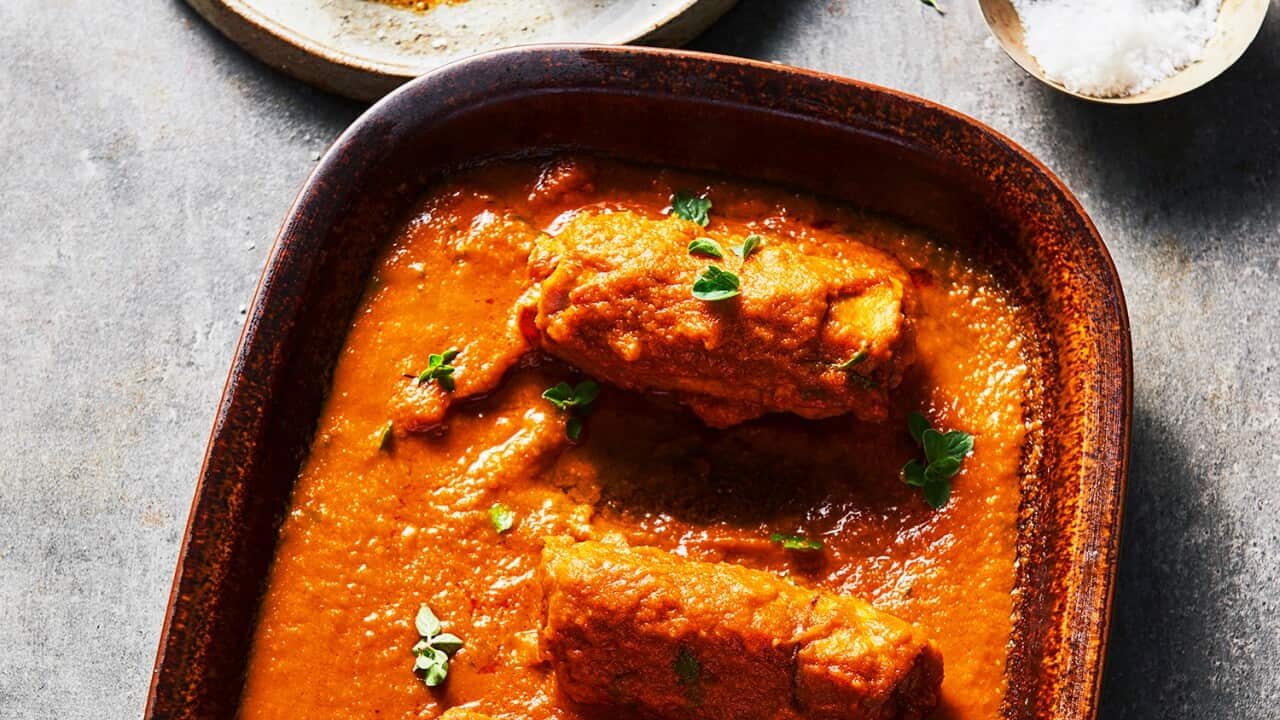serves
4
prep
30 minutes
cook
45 minutes
difficulty
Mid
serves
4
people
preparation
30
minutes
cooking
45
minutes
difficulty
Mid
level
A curious title indeed! Originally from Menorca, this historic dish served throughout the Balearics doesn’t contain partridges, or chaplains for that matter . . . It also goes by the name of ‘feixets’ and can be traced back more than 200 years. Back then, monasteries were poor and relied on meat offcuts to make their meals. This dish was made regal by rolling very thin slices of beef or veal around local charcuterie, probably the dried-out ends that needed cooking up. Full of flavour, these firm little parcels could easily pass for a small stuffed partridge under the dim lights of the church candelabra.
Ingredients
- 4 200 g (7 oz) veal escalopes
- sea salt flakes and freshly ground black pepper
- 8 jamón slices
- 150 g (5½ oz) sobrassada (see Note) or fresh chorizo sausage, de-cased
- 180 g (6½ oz) piece flat pancetta, cut into thin 1-cm (½-in) long batons
- 75 g (2¾ oz/½ cup) plain (all-purpose) flour
- 2 tbsp extra-virgin olive oil
- 4 garlic cloves, unpeeled, smashed
- 2 fresh bay leaves
- 1 onion, finely diced
- 1 small carrot, finely diced
- 1 tbsp tomato paste (concentrated purée)
- 125 ml (4 fl oz/½ cup) Cognac
- 250 ml (8½ fl oz/1 cup) chicken stock, heated to a simmer
- 2 tsp chopped parsley or marjoram, to serve
- mashed potato or crusty bread, to serve
Instructions
- Gently flatten one veal escalope with a meat cleaver to a 10 x 16 cm (4 x 6¼ in) rectangle. Cut it in half and set aside. Repeat with the remaining veal to make eight flattened escalopes.
- Working with one escalope at a time, place on a clean work surface with a short end facing you. Lightly season and lay a slice of jamón over the top. Spoon 2 teaspoons of sobrassada or chorizo sausage in a log along the centre of the veal and scatter over a few pieces of pancetta. Fold over the side of the veal closest to you and roll up into an even log shape. Take some kitchen string and tie three or four lengths along the log to hold the filling in place when cooking. Repeat with the remaining escalopes to make eight parcels, then dust in the flour and set aside on a tray.
- Heat half the oil in a large heavy-based frying pan over high heat. Add the stuffed veal and quickly sear on all sides. Transfer to a plate and set aside.
- Reduce the heat to medium–low and add the remaining oil, along with the garlic, bay leaves, onion, carrot and a pinch of salt. Cook for 15 minutes or until the vegetables are soft and beginning to break down, then add the tomato paste and cook for 4–5 minutes, until it turns dark red and the pan starts to dry out. Pour in the Cognac, allow to simmer and reduce slightly, then add the stock. Cook for 3–4 minutes to bring the flavours together, then remove the bay leaves and blitz the mixture with a hand–held blender to a smooth sauce.
- Return the stuffed veal to the pan, cover with a tight-fitting lid and cook for 8–10 minutes, turning the veal over halfway.
- Remove the kitchen string from the veal and scatter over the parsley or marjoram. Serve with your favourite mash and some crusty bread.
Note
• Sobrassada, a spreadable salami-like paste, can be purchased at delicatessens or online in Australia.
Recipes and images from Islas: Food of the Spanish Islands by Emma Warren, Smith Street Books, RRP $49.99
Cook's Notes
Oven temperatures are for conventional; if using fan-forced (convection), reduce the temperature by 20˚C. | We use Australian tablespoons and cups: 1 teaspoon equals 5 ml; 1 tablespoon equals 20 ml; 1 cup equals 250 ml. | All herbs are fresh (unless specified) and cups are lightly packed. | All vegetables are medium size and peeled, unless specified. | All eggs are 55-60 g, unless specified.
A curious title indeed! Originally from Menorca, this historic dish served throughout the Balearics doesn’t contain partridges, or chaplains for that matter . . . It also goes by the name of ‘feixets’ and can be traced back more than 200 years. Back then, monasteries were poor and relied on meat offcuts to make their meals. This dish was made regal by rolling very thin slices of beef or veal around local charcuterie, probably the dried-out ends that needed cooking up. Full of flavour, these firm little parcels could easily pass for a small stuffed partridge under the dim lights of the church candelabra.

